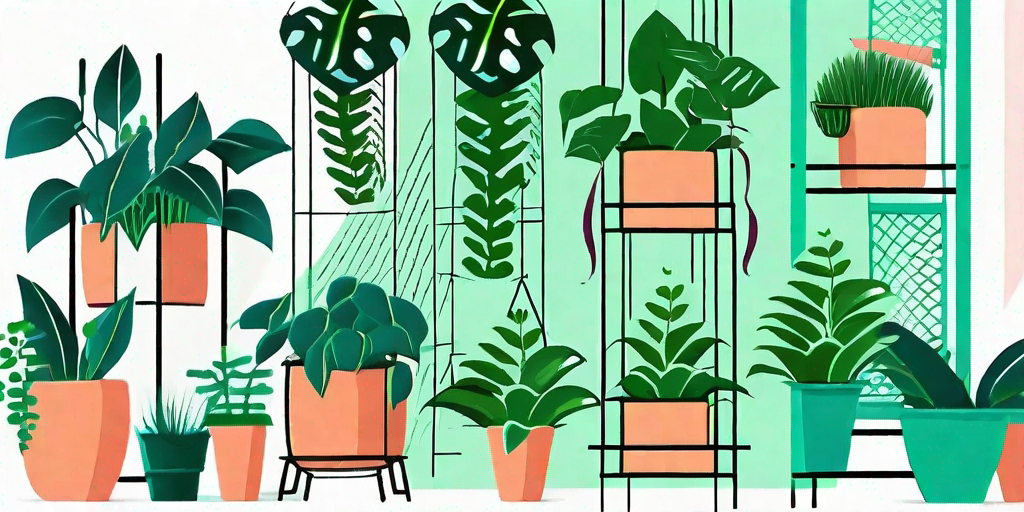
Welcome to the wonderful world of Philodendron, where the leaves are always green and the beauty is ever-lasting! If you are a gardening enthusiast or a plant lover, you are in for a treat. We are about to embark on an exciting journey to explore the ins and outs of growing Philodendron outdoors. So, grab your gardening gloves and let's get started!
Understanding the Philodendron
Before we dive into the deep end, let's take a moment to appreciate the beauty and diversity of the Philodendron genus. With over 400 species, this tropical plant family offers a variety of shapes, sizes, and colors, each more enchanting than the last. From the heart-leaf Philodendron to the giant Philodendron selloum, there's a perfect Philodendron for every garden.
Native to the rainforests of South America, Philodendrons are known for their stunning foliage and resilient nature. They are climbers and crawlers, with some species capable of reaching up to 20 feet in height. But don't worry, you won't need a ladder to care for your Philodendron. With the right tips and tricks, you can keep your plant manageable and lush.
Choosing the Right Philodendron for Your Garden
With so many species to choose from, picking the right Philodendron for your garden can feel like finding a needle in a haystack. But fear not, we've got you covered. Here are a few factors to consider when choosing your Philodendron:
Light Requirements
Philodendrons are tropical plants, which means they love bright, indirect light. However, some species can tolerate lower light conditions. So, consider the light conditions in your garden before making your choice.
For example, the heart-leaf Philodendron thrives in low to medium light, making it a great choice for shady gardens. On the other hand, the Philodendron selloum prefers bright, indirect light, making it perfect for sunnier spots.
Size and Growth Habit
Philodendrons come in all shapes and sizes. Some are compact and bushy, while others are tall and vining. Consider the space available in your garden and choose a Philodendron that fits.
For smaller gardens, consider compact varieties like the Philodendron 'Moonlight'. For larger gardens, you can go all out with a towering Philodendron selloum or a sprawling Philodendron 'Rojo Congo'.
Planting and Caring for Your Philodendron
Now that you've chosen your Philodendron, it's time to get your hands dirty. But don't worry, planting and caring for a Philodendron is a breeze. Here's a step-by-step guide to help you along the way:
Step 1: Planting Your Philodendron
- Choose a spot in your garden that meets your Philodendron's light requirements.
- Prepare the soil by adding compost or a slow-release fertilizer. Philodendrons love rich, well-draining soil.
- Plant your Philodendron at the same depth it was in its pot. Make sure the roots are well covered with soil.
Step 2: Watering Your Philodendron
Philodendrons like their soil to be consistently moist, but not waterlogged. A good rule of thumb is to water your plant when the top inch of soil feels dry to the touch. Be careful not to overwater, as this can lead to root rot.
In hotter months, your Philodendron may need more frequent watering. In cooler months, you can cut back on watering. Remember, it's better to underwater than overwater!
Step 3: Feeding Your Philodendron
Philodendrons are not heavy feeders, but they do appreciate a little extra nutrition during their growing season. Feed your plant with a balanced houseplant fertilizer every 2-4 weeks during spring and summer. In fall and winter, you can cut back on feeding.
Remember to follow the fertilizer instructions to avoid overfeeding. Too much fertilizer can cause leaf burn and damage the roots.
Common Philodendron Problems and Solutions
Like all plants, Philodendrons can encounter a few problems along the way. But don't worry, most of these issues are easy to fix. Here are some common Philodendron problems and their solutions:
Yellow Leaves
Yellow leaves can be a sign of overwatering. If your Philodendron's leaves are turning yellow, check the soil. If it's waterlogged, cut back on watering and make sure your plant has proper drainage.
Yellow leaves can also be a sign of nutrient deficiency. If your plant's leaves are yellowing despite proper watering, it might be time for a feed.
Brown Leaf Tips
Brown leaf tips are often a sign of low humidity. Remember, Philodendrons are tropical plants and they love humid conditions. If your plant's leaf tips are turning brown, consider misting your plant or placing it near a humidifier.
Brown leaf tips can also be a sign of overfeeding. If you've been generous with the fertilizer, it might be time to cut back.
Frequently Asked Questions
Can Philodendrons grow in full sun?
While Philodendrons can tolerate a range of light conditions, they prefer bright, indirect light. Full sun can scorch their leaves and cause leaf drop. If you want to grow a Philodendron in a sunny spot, make sure it's protected from direct sunlight, especially during the hottest part of the day.
Are Philodendrons poisonous?
Yes, Philodendrons are poisonous if ingested. They contain calcium oxalate crystals, which can cause irritation and swelling of the mouth and throat. Keep your Philodendron out of reach of children and pets.
How often should I repot my Philodendron?
Philodendrons are fast growers and may need to be repotted every 1-2 years. However, some species prefer to be a bit root-bound and can stay in the same pot for several years. Check your plant's roots regularly. If they are circling the bottom of the pot or growing out of the drainage holes, it's time to repot.
Conclusion
And there you have it, a comprehensive guide to unleashing the beauty of Philodendron outdoors. With the right care and attention, your Philodendron can transform your garden into a tropical paradise. So, what are you waiting for? It's time to get planting!















